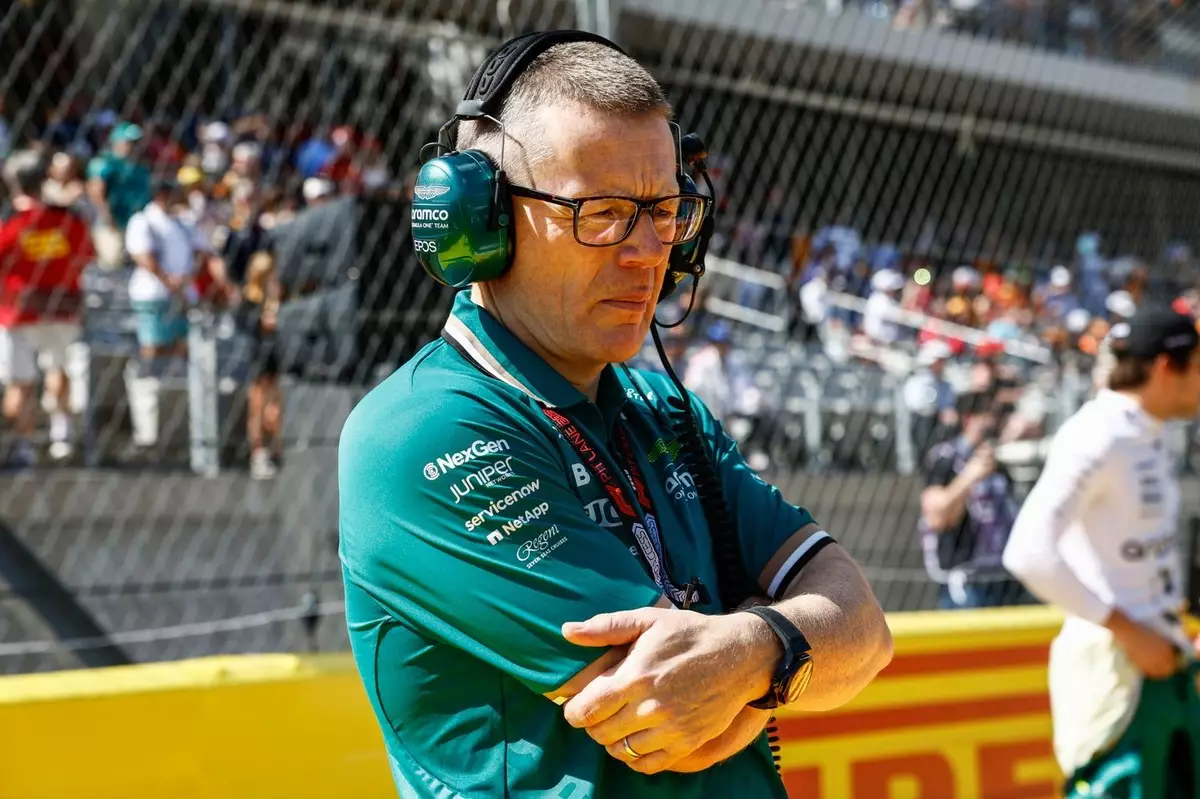Aston Martin’s recent restructuring of its team management signifies a bold move that could redefine its trajectory in the highly competitive world of Formula One. The appointment of Andy Cowell as the new team principal—replacing Mike Krack who now takes on the role of chief trackside officer—underscores the organization’s commitment to enhancing performance and fostering innovation. This transition not only reflects a shift in leadership but also a broader strategy aimed at solidifying Aston Martin’s status as a formidable contender on the race track.
The reshuffling of personnel marks a pivotal moment for Aston Martin. Cowell, previously the head of Mercedes High-Performance Powertrains, now assumes a dual role encompassing both the team’s operational functions and its performance objectives. His extensive background in powertrain engineering will serve as a vital asset in enhancing the team’s competitiveness. According to official statements, this restructuring aims to foster a separation between trackside and factory-based teams, allowing for more focused and specialized efforts in race car development. This indicates a strategic effort to optimize each segment of the team’s operations, which could lead to significant improvements on the track.
Enrico Cardile’s forthcoming role as chief technical officer further exemplifies Aston Martin’s intent to elevate its engineering prowess. Cardile, who is transitioning from Ferrari, is set to oversee the design and construction of new race cars once his gardening leave concludes. His appointment signals Aston Martin’s ambition to harness the technical expertise gained across rival teams. The emphasis on dedicated teams for aerodynamics, engineering, and performance underscores the importance of targeted development—a lesson learned from past performances that highlighted the need for clearer delineation of responsibilities.
The Uncertainties Ahead
Despite these promising developments, uncertainty remains regarding the future roles of existing team members. Tom McCullough, previously tasked with maximizing performance trackside, now faces an ambiguous transition into a leadership position within the group. His extensive experience could still benefit Aston Martin, yet the specifics of his role remain unclear, particularly as the team ventures into a new era of competition and innovation.
Moreover, the role of Adrian Newey as ‘managing technical partner’ adds another layer of complexity to the management structure. Known for his selective involvement, Newey’s contributions may fluctuate based on where he perceives the greatest impact can be made. This selective engagement raises questions about consistency and collaborative efforts within the team, potentially impacting long-term strategic visions.
Aston Martin’s partnership with Honda and Aramco as it transitions to a full works team by 2026 reflects a deliberate strategy to enhance its capabilities and investment in pursuit of championship titles. These collaborations will likely provide the necessary resources and technological advancements to propel the team forward. Cowell’s commentary regarding the team’s dedication and commitment suggests a culture of hard work that is crucial in the high-stakes environment of Formula One racing.
Aston Martin’s ambition to evolve into a championship-winning team is a compelling narrative that exemplifies the drive and determination within the organization. The comprehensive management overhaul is not merely a reaction to previous shortcomings but a proactive measure aimed at establishing a competitive edge through talent acquisition and structural reform.
Aston Martin’s strategic restructuring positions the team to harness the attributes of its new leadership while addressing past challenges. By clarifying roles and enhancing the separation of functions, the organization aims to maximize its potential in the fiercely competitive arena of Formula One. Moving forward, the successful implementation of these changes, integrated partnerships, and clear strategic direction will be vital as Aston Martin endeavors to achieve its long-held aspiration of becoming a championship title contender. The forthcoming season will undoubtedly serve as a crucial testing ground for the efficacy of this bold transformation.

